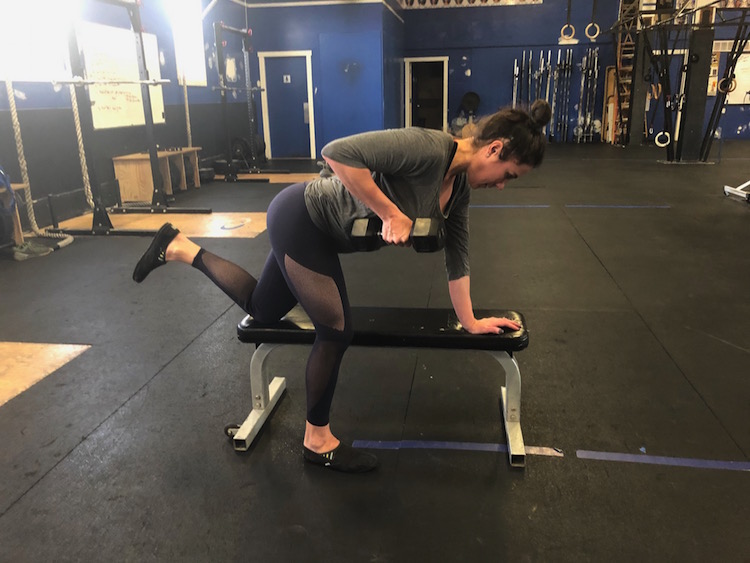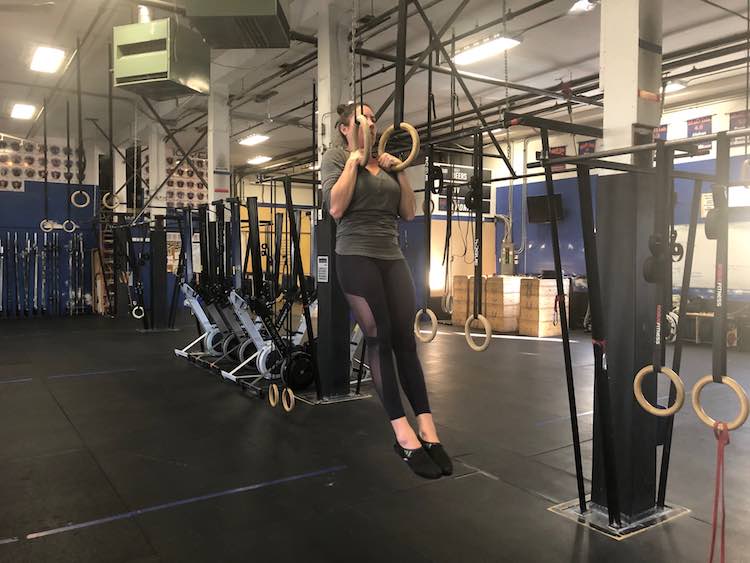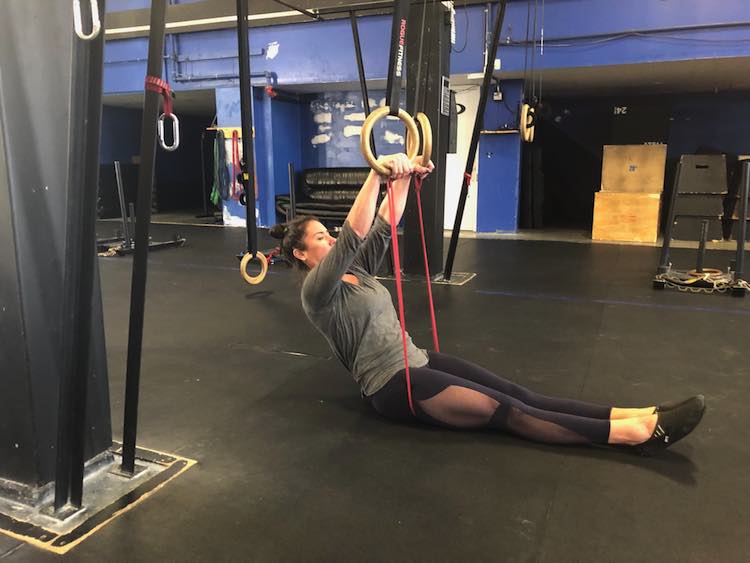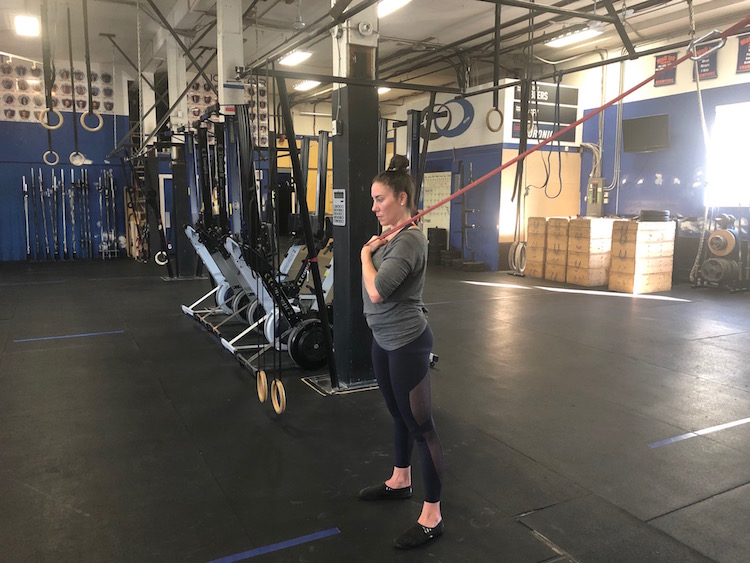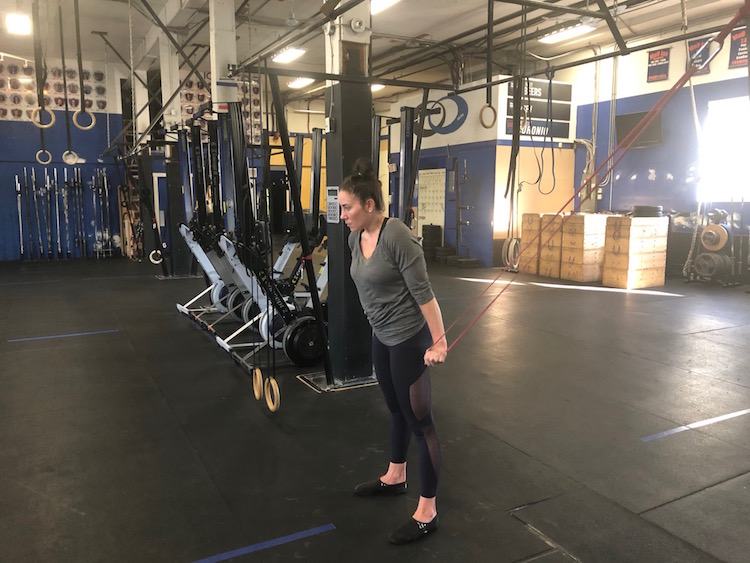Oh the transition. The elusive muscle-up transition.
It’s where the great majority of those seeking a muscle-up struggle the most. They can do a strict chest-to-bar pull-up, and they can do deep ring dips, but they just can’t get through the rings from the pull into the dip.
“I think it’s my mobility,” they say. “I’m just not flexible in that position.”
While that might be the case for some, usually it’s a strength deficiency: You’re weak in that position.
When I tell clients this, they look discouraged. Saddened even.
Instead of being sad, add these six exercises to your training to improve your transition prowess:
1. Dumbbell and Barbell Rows
Dumbbell and barbell rows are great for improving pulling strength, and also for building end range shoulder extension strength, like the position you will end up in at the bottom of the dip.
Focus on using your lats to get your elbows back as far as possible.
• 3 sets of 8-12 repetitions
2. Chest-to-ring holds
Holding the top of a chest-to-ring pull-up is a great way to build the strength you’ll need to transition to the dip.
When you’re doing these, focus on keeping the rings at the center of your chest, and make sure the rings are touching your chest. Also, focusing on keeping your knuckles close together helps prevent the rings from shooting out to the side.
• 3 sets of 10-30 seconds hold
3. Bottom of the dip holds
Similarly, holding the bottom of a dip, either via a box dip or a ring dip, will also help you build end range strength.
The important part here is to get into as deep of a dip as you can, all the while maintaining tension throughout your body. You’ll need this tension to successfully complete a transition.
• 3 sets of 10-30 seconds hold
4. Russian dips
In the below video, 2014 CrossFit Games champion Camille Leblanc-Bazinet demonstrates some beautiful Russian dips.
Russian dips help you with the quick turnover you need during a muscle-up. They’re a higher level skill, and if you can do these, you probably have the strength to do a muscle-up. Keep the bench right under your armpits and focus on keeping your torso upright—don’t throw your body forward—and don’t be afraid to use some speed.
• 3 sets of 2-5 repetitions
5. Negatives or banded negatives
Negatives are one of my favorite ways to build transition strength. They’re really useful for teaching you just how much tension you have to have in your body as you’re transitioning. If you don’t stay tight through your shoulders and core during a negative, you’re not going to be able to control the movement, and you’ll end up dropping quickly to the ground, which isn’t what we’re aiming for.
The goal here is to start at the top of the ring dip and take 8 to 12 seconds to slowly lower yourself into a dip before slowly doing a reverse transition until you’re at the top of a pull-up and then continuing to slowly lower yourself into a dead hang hold.
If you can’t do these with control, you can also do them seated in a band. The same principles apply: Keep these slow and controlled.
• 3 sets of 3 (8-12 second transitions). Rest as needed between repetitions.
6. Single-arm standing banded transition
One of the biggest mistakes I see on the transition is getting the rings out to the side and too far away from the person’s body.
This simple single-arm standing banded transition drills gets you working hard to ensure the rings stay close to the center of your body as you’re transitioning into the dip. Take 8-12 seconds to go through this entire movement.
• 3 sets of 8-10 repetitions per arm
